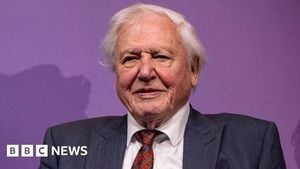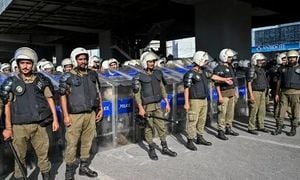On Saturday, October 18, 2025, Southern California’s busiest artery, Interstate 5, ground to a halt as a controversial military demonstration unfolded overhead. The event, organized to celebrate the 250th anniversary of the U.S. Marine Corps at Camp Pendleton, featured the firing of live 155mm artillery shells over a 17-mile stretch of the freeway—an unprecedented spectacle that has ignited a fierce debate about public safety, political grandstanding, and the proper use of military power.
Governor Gavin Newsom, a Democrat, was quick to voice his outrage. In a pointed statement, Newsom declared, “The President is putting his ego over responsibility with this disregard for public safety. Firing live rounds over a busy highway isn’t just wrong — it’s dangerous.” According to The Associated Press, Newsom’s objections forced the closure of the crucial corridor from 11 a.m. to 3 p.m., a move that rippled through the region’s transportation network and economy.
The closure was not a minor inconvenience. Interstate 5 is the economic backbone of Southern California, ferrying 80,000 travelers and $94 million in freight every day between San Diego and Los Angeles, as reported by the governor’s office. The California Department of Transportation’s spokesperson, Matt Rocco, underscored the gravity of the decision: “This is all because of the White House-directed military event, that for the safety of the public, we need to shut down the freeway since they’re sending live ordinances over the freeway.” Rocco estimated the closure could add up to two hours to the commutes of anyone traveling between the two major cities. On top of that, passenger rail services running parallel to the freeway were also canceled for the afternoon, further compounding the disruption.
Despite the outcry, U.S. Marine officials at Camp Pendleton insisted that the artillery exercise posed no danger to the public and that it was standard training fare. In a statement cited by The New York Times, Marine Capt. Gregory Dreibelbis said, “Weeks of deliberate planning and rehearsals ensured success at every phase of execution.” The Marines maintained that the demonstration would occur on approved training ranges and adhere strictly to established safety protocols. No accidents or injuries were reported during the exercise, and the demonstration reportedly went off without a hitch.
The event itself was a grand affair. Vice President JD Vance, a Marine Corps veteran, attended alongside Defense Secretary Pete Hegseth. The pair watched as amphibious vehicles rolled onto Red Beach and aircraft streaked across the sky, trailing columns of smoke from munitions strikes. At least 15,000 Marines, sailors, veterans, and their families gathered to witness the display of military might. “The capabilities demonstration will feature integrated Navy and Marine Corps operations across air, land and sea,” the Marines announced in a statement, according to The Guardian.
But the spectacle was not without its critics. Governor Newsom’s condemnation was echoed by other state officials, who saw the event as an unnecessary risk and a political stunt. In a message posted on social media, Newsom wrote, “Flying live rounds over a busy highway without coordination between state, federal, and local partners isn’t just wrong – it’s dangerous.” He went further, accusing the White House of using the military to intimidate political opponents: “Using our military to intimidate people you disagree with isn’t strength — it’s reckless, it’s disrespectful, and it’s beneath the office he holds.”
Republican leaders, however, saw things differently. U.S. Representative Darrell Issa, whose district lies just east of Camp Pendleton, lambasted the highway shutdown, calling it “a spiteful publicity stunt” by Newsom. The Vice President’s office also pushed back against the governor’s claims. William Martin, a spokesperson for Vice President Vance, told The New York Times, “If Gavin Newsom wants to oppose the training exercises that ensure our Armed Forces are the deadliest and most lethal fighting force in the world, then he can go right ahead.” Martin insisted that the artillery demonstration was routine and that Newsom was misleading the public about the risks involved.
The lead-up to the event was marked by confusion and last-minute changes. Earlier in the week, the U.S. Marines had assured state officials that the exercise would not involve firing over the freeway. But on Friday evening, live munitions were observed being fired near the highway in what appeared to be a practice run. That same night, event organizers requested signage along I-5 reading “Overhead fire in progress,” according to The Associated Press. By early Saturday morning, the federal government confirmed to state and local authorities that live fire activities would indeed take place over the freeway at 1:30 p.m. The California Highway Patrol, citing “extreme life safety risk and distraction to drivers, including sudden unexpected and loud explosions,” made the call to close the highway for the duration of the demonstration.
The economic fallout was swift. The governor’s office estimated that the closure alone resulted in $8.2 million in lost daily visitor spending, not to mention the thousands of truck shipments and commuters left stranded or forced to detour. Businesses along the corridor faced delays in deliveries and a sharp drop in customer traffic. The closure also coincided with a series of “No Kings” rallies and marches across the U.S., including several in California, protesting what organizers described as the nation’s slide toward authoritarian rule. Newsom urged demonstrators to act peacefully and use their voices, declaring, “THERE ARE NO KINGS IN THE UNITED STATES.”
Amid the political finger-pointing, one thing was clear: the intersection of military tradition, public safety, and partisan rivalry had produced a day of confusion and gridlock for Southern California. While the Marines celebrated their storied history with a show of force, tens of thousands of Californians found themselves stuck in traffic or scrambling for alternate routes. The debate over whether the event was a necessary tribute or an avoidable hazard is likely to echo well beyond this weekend, as leaders on both sides dig in for the next round of political sparring.
For now, the only certainty is that the I-5 shutdown left an indelible mark on the region, serving as a reminder of both the power and the peril that come with high-profile displays of military might in the public sphere.






